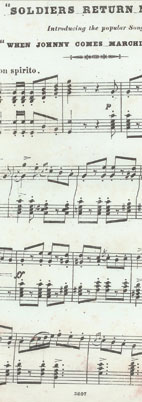
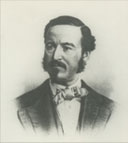

Patrick Sarsfield Gilmore, musician, composer
(1829-1892)
Patrick S. Gilmore was a 19th century musician, composer, and showman who took brass band music in America to a whole new level. Born in Ballygar, County Galway, Gilmore came to Boston in 1849 and immediately established himself as an exceptional cornet player and band leader. Like many Irish he enlisted when the American Civil War broke out and became Bandmaster of the Union Army. He composed, arranged and self-published several songs that became best-sellers during the war, including Good News from Home, We are Coming Father Abraham, and most famously, When Johnny Comes Marching Home.
After the war Gilmore organized a National Peace Jubilee in Boston in 1869, held in the Copley Square area of Boston. The Jubilee featured 1,000 musicians, 10,000 singers and was attended by President Ulysses S. Grant. Three years later Gilmore staged an International Peace Jubilee that doubled the musicians and singers, and featured Austrian waltz king Johann Strauss, making his first American appearance.
Gilmore historian Michael Cummings notes that Gilmore organized Boston's first July 4th concert, initiated the New Year's Eve countdown in New York City, and played at the dedication of the Statue of Liberty.


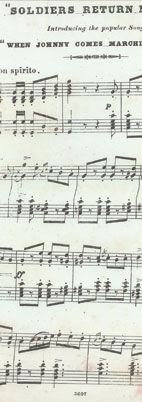



Patrick Sarsfield Gilmore
Musician, composer
(1829-1892)
Patrick S. Gilmore was a 19th century musician, composer, and showman who took brass band music in America to a whole new level. Born in Ballygar, County Galway, Gilmore came to Boston in 1849 and immediately established himself as an exceptional cornet player and band leader. Like many Irish he enlisted when the American Civil War broke out and became Bandmaster of the Union Army. He composed, arranged and self-published several songs that became best-sellers during the war, including Good News from Home, We are Coming Father Abraham, and most famously, When Johnny Comes Marching Home.
After the war Gilmore organized a National Peace Jubilee in Boston in 1869, held in the Copley Square area of Boston. The Jubilee featured 1,000 musicians, 10,000 singers and was attended by President Ulysses S. Grant. Three years later Gilmore staged an International Peace Jubilee that doubled the musicians and singers, and featured Austrian waltz king Johann Strauss, making his first American appearance.
Gilmore historian Michael Cummings notes that Gilmore organized Boston's first July 4th concert, initiated the New Year's Eve countdown in New York City, and played at the dedication of the Statue of Liberty.


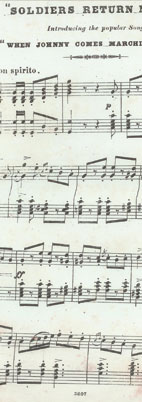

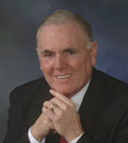

Raymond L. Flynn
Mayor of Boston, Ambassador to the Vatican
On November 12, 2016, Mayor Marty Walsh and a contingent of city officials, business leaders, tourism officials, labor activists, community leaders, family and friends and South Boston neighbors gathered to officially dedicate the Raymond L. Flynn Marine Park in the South Boston Seaport District.
Read about the dedication here.


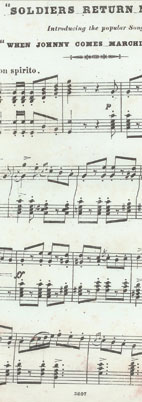

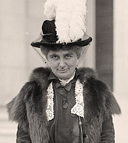

Mary Boyle O’Reilly
Prison Reform Activist, Children’s Advocate, and Journalist
(1873-1939)
Mary Boyle O’Reilly was a social activist and reformer whose passion was protecting children and young women. The daughter of Irish leader John Boyle O’Reilly, she was born and raised in Charlestown, and also lived in Jamaica Plain.
In 1901 O’Reilly and others established the Guild of St. Elizabeth, a Catholic settlement home for Children in Boston’s South End. From 1907-1911 she was Massachusetts Prison Commissioner, and also a trustee of Boston’s Children’s Institutions.
O’Reilly also used her writing to create change. In 1910, disguised as a mill worker, she exposed the notorious ‘baby farms’ in New Hampshire.
In 1913 she became a foreign correspondent for the Newspaper Enterprise Association, reporting from Mexico and Russia, and heading up the London Office. When World War I erupted, she entered Belgium disguised as a peasant to cover the action. The Germans briefly imprisoned her and three other journalists, and upon her release she returned to Belgium in disguise.
O’Reilly was active in a variety of health and women’s organizations such as the Women's Educational and Industrial Union and the Tuberculosis Society, and she lectured extensively on Ireland and on her father’s work.
Her large collection of books, pamphlets and clippings on war propaganda are housed at the Boston Public Library.


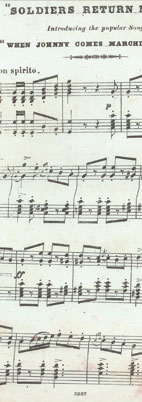

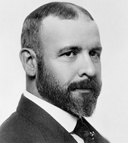

Louis H. Sullivan
Architect
(1856-1924)
Regarded as the Father of American Architecture, Louis Sullivan was born at 22 Bennett Street in Boston's South End to an Irish father and a French-Swiss mother. His father Patrick was an itinerant dance master who arrived on The Unicorn in July 1847 at the height of the Irish famine.
Louis was raised in South Reading in a bi-lingual household and he advanced quickly as a student, attending MIT at age16. He then moved to Paris to complete his studies before settling in Chicago right after the Great Fire of 1871, where his services were in great demand.
Sullivan led a movement to create an American style of architecture that acknowledged masterpieces of European design but didn't imitate them. He was Frank Lloyd Wright's mentor, and influenced the so-called Prairie School of architects.
Sullivan coined the adage that 'form ever follows function,' and his buildings in the Midwest, just over ten stories high and considered gigantic by standards of the time, prompted the new word skyscrapers.
On September 3, 1946 the Boston Society of Architects and the Massachusetts State Association of Architects placed a bronze plaque at Sullivan's birthplace at 22 Bennett Street in the South End.


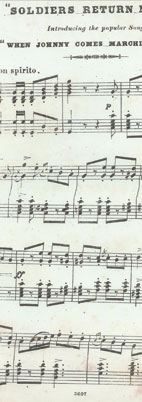

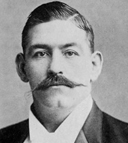

John L. Sullivan
Heavyweight Boxing Champion
(1858-1918)
Born on October 12 on East Concord Street in the South End, John L. Sullivan was America’s first sports star, reigning as the heavyweight boxing champion and captivating the world with his dominance.
His father Mike emigrated from Kerry in 1850 and his mother Katherine Kelly came from Galway. John L. seemed destined to be a laborer like his father, but sports proved to be an outlet. A gifted baseball player, he was offered a contract by the Cincinnati Red Stockings, the first professional team in baseball.
His feats of strength earned him the nickname Strong Boy. He became a boxer by chance: in 1878 at the Dudley Street Opera House. Sullivan knocked out Jack Scannell in one punch, and soon was fighting epic battles against all challenges.
Sullivan lived a flashy, self-destructive life, spending his earnings on 'whiskey and women,' and lost his heavyweight crown to James Corbett in 1892. But he bounced back and formed his own temperance association, hitting the road to lecture on the evils of alcohol. Later in his career he wrote sports articles for the New York Times. He is buried at Old Calvary Cemetery in Roslindale.


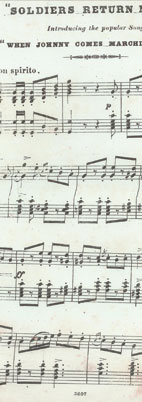

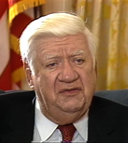

Thomas "Tip" O'Neill
Legendary politician Thomas P. Tip O'Neill was born in Cambridge in 1912; his grandfather and brothers had emigrated in the 1840s during the Irish Famine. The famous U.S. Congressman from North Cambridge was the 47th Speaker of the House of Representatives from 1977 to 1987, having worked his way up the political ranks by understanding the truism he learned in his neighborhood: All Politics is Local. Tip passed away on January 5, 1994 and his legend remains intact.
On December 9, 2012, to celebrate the centenary of Tip's birth, the North Cambridge Neighborhood of Barry's Corner unveiled a mural to Tip O'Neill at the Mildred Anne O'Neill Branch of the Cambridge Public Library, located at 70 Rindge Avenue. The mural was designed and painted by David Fichter and Joshua Winer.
Read more about the mural here.


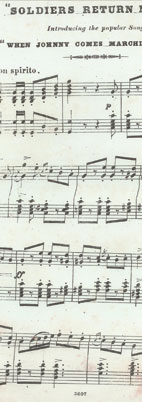

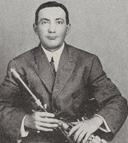

Patrick (Patsy) Touhey
Uilleann Piper
(1865-1923)
Known as the King of the Pipers, Patsy Touhey was a master uilleann piper who represented Irish music in late 19th century America. He was one of the first Irish musicians to record his music.
At age three, his family emigrated from Loughrea, County Galway to South Boston. He began music lessons with Bartley Murphy, a Mayo-born piper. Patsy moved to New York as a teenager, and in the 1880s toured with George M. Cohan's Irish Hibernicon, doing one-night stands along the East Coast.
A left handed piper, Patsy was renowned for his dexterity and imagination. In 1893, he represented Ireland at the World Fair in Chicago, and at the St. Louis Expo in 1903 before returning to New York. There he formed a vaudeville act with his wife, dancer Mary Gillen, and comedian Charles Henry Burke. They used the Hibernicon format of witty sketches, physical comedy and Irish music and dancing.
Touhey died on January 10, 1923, and is buried at St. Raymond's Cemetery. The Irish World obituary notes, "An extraordinarily gifted musician, Patrick Touhey was not given to boastfulness or self-exploitation, but on the contrary, was genial and generous, the soul of kindliness and modesty."


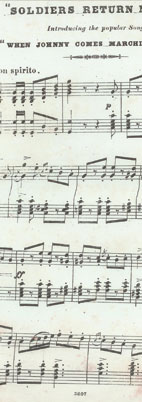

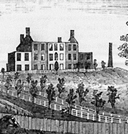

Sisters of Ursuline Academy
On August 11, 1834, the Ursuline Convent in Charlestown, Massachusetts, a Catholic-run boarding school for girls of all denominations, was set afire by workmen furious about the growing presence of Catholics in the town.
The Boston Atlas reported that the “pianos and harps, thrown from the windows when the Convent was set on fire, were subsequently burnt, and nothing but an old chair and one or two worthless articles were saved from destruction.”
Read more about Ursuline Academy here.


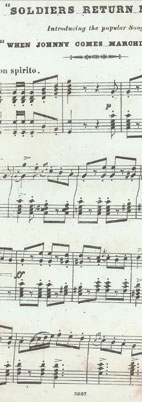

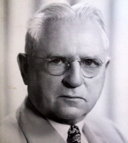

Daniel J. Tobin
General President of the International Brotherhood of Teamsters
(1875-1955)
Daniel J. Tobin was born in County Clare, Ireland, and immigrated to Boston in 1889 at the age of fourteen. He continued his education at night and worked at a sheet metal plant in Cambridge. When he lost his job there he worked in a horse stable and learned to drive a three-horse team. He drove a street car in Boston and joined Local 25 of the Teamsters.
In 1907 Tobin was elected General President of the IBT by a margin of 12 votes out of 200+ delegates. He remained in that post until he retired in 1952. During that time, the Teamsters grew from 38,905 to 120,245 members, making them the most powerful union in America.
Tobin also held positions in the American Federal of Labor (AFL) and “helped lay the foundation for the future merger of the AFL and CIO organizations. He was Chairman of the Labor Division of the Democratic Party, and became a close ally and confident of President Franklin D. Roosevelt. He worked closely with labor leaders like Samuel Gompers, William Green and others, and was also respected as a labor leader on international matters.


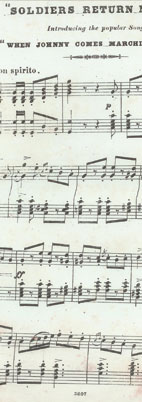

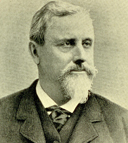

Hugh O'Brien
Mayor of Boston, Publisher
(1827-95)
Hugh O'Brien was Boston’s first Irish-born Mayor, serving four consecutive one-year terms from 1885-1888. Born in County Cork, his family emigrated to Boston in 1832, where they settled in the Fort Hill area. He learned the printing trade at the Boston Courier newspaper, and at fifteen became foreman of a printing office on School Street. He launched a publication called Shipping and Commercial List and became a successful businessman.
O'Brien launched his political career in 1775 on the Board of Aldermen, then served as Mayor for four terms, before losing to Thomas N. Hart. While in office, he presided over the creation of the city's Emerald Necklace park system and laid the cornerstone for the Boston Public Library at Copley Square.
He was a prominent supporter of orphans, and at his funeral at Holy Cross Cathedral, the Republic newspaper wrote, "The largest and most conspicuous delegation was that from the St. Vincent's Orphan Asylum, 200 little children all dressed alike, who sat immediately behind the family."
In 1888 Irish-American sculptor John Donoghue created a bust of O'Brien that is currently in the Abbey Room at Boston Public Library. He is buried at Holyhood Cemetery in Brookline.


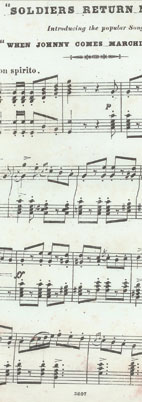

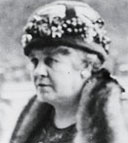

Sara Agnes McLaughlin Conboy
Sara Agnes Mclaughlin (1868-1928) was born in Boston, Massachusetts, on April 3, 1868 to Irish immigrant parents, and grew up in South Boston. She would become a pioneering union labor who successfully advocated for women factory workers and for men and child workers as well.
Her father, a laborer, died when she was 11, leaving his wife and five children, so Sara left school in the fourth grade and began working, first in a candy factory and then in a button factory.
In February, 1887, at age 18, Sara married Joseph P. Conboy, a mail carrier who died two years after the wedding, leaving her as a single mother with a baby.
She became a skilled carpet weaver, and while working at a Roxbury carpet factory she led a strike for higher wages with 119 women in 1909. The strike ended in May 1910, and it was stated that the union made very few concessions. At the labor day parade, the Roxbury carpet factory workers, glad in white and composed of about 100 women in three floats, marched together in the procession to great applause, with signs that read, 'you can walk on our carpets but not on us.' Conboy also marched with the girls of the cigar strippers and the laundry workers unions in the parade.
In addition to heading up the women's Union, Conboy was unanimously renominated in November as the business agent of the Roxbury textile workers union 737, the men's union at the carpet mill. "It is stated that Mrs. Conboy is the only woman agent of a man's union in the Boston area," wrote one paper.
She was also involved in the famous Bread & Roses strike in Lawrence, MA in 1912 and ran the relief efforts underway for the families of the strikers. Mabel Gillespie of the Women's Trade Union League, later said of Conboy's role, "She worked incessantly day and night, administering relief in that crowded station, and found time also to go out and appeal for funds to keep the station going. She is a warm-hearted motherly type, the kind of person who commands confidence and lends reassurance to people in trouble. I remember that she took full charge of the records in Lawrence. By nature she is systematic and business-like."
From that success, Conboy helped organize the United Textile Workers of America and became secretary-treasurer in 1915. Sarah was appointed to the Council of National Defenses during World War I and was the only woman in attendance at President Wilson's conference on labor in 1918. Known affectionately as "Aunt Sara" to thousands of men and women whom she represented, Sara was among the first woman to achieve a position of influence in organized labor.
In 1923, she was named president of the newly formed Federation Bank of New York, an organized workers' bank. In an interview with the New York Telegram, Conboy said, "We are going to help the boys and girls and men and women who work for a living to save their money, to acquire bank accounts, to build and own their own homes. We urge our workers to become their own landlords."
The Boston Globe described her as having "Irish spirit, merry, twinkling blue eyes, a wonderful laugh and brains."
Sara Agnes McLaughlin Conboy died on January 7, 1928, in Brooklyn, New York. Her body was returned to her mother in Boston, and there was a funeral mass at St. Peter's Church in Dorchester. She is buried in the family plot at Calvary Cemetery, West Roxbury.


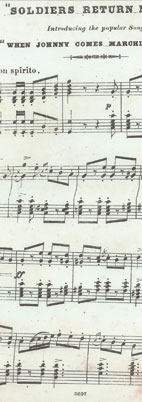

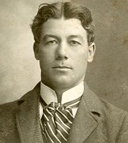

Patsy Donovan
Details to come.
Please check back
Thank You!


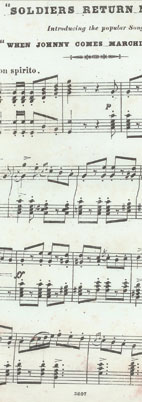

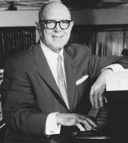

Jimmy McHugh
Born in Jamaica Plain in 1894, songwriter Jimmy McHugh was hailed as one of Hollywood's top composers. During his career, McHugh wrote more than 500 hit songs, including, "On the Sunny Side of the Street," "I'm in the Mood for Love," "Let's Get Lost" and countless other songs that were recorded by the likes of Frank Sinatra, Ella Fitzgerald, Billie Holiday and Chet Baker. Jimmy passed away in 1969 and a year later was inducted into the Songwriters Hall of Fame.
See more details about Jimmy McHugh here.


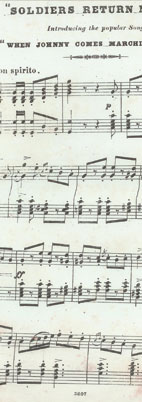

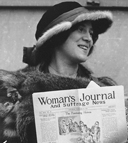

Margaret Lillian Foley
Suffragist
(1875-1957)
Born at Meeting House Hill in Dorchester, Margaret Lillian Foley was a well known women’s suffragist who was affectionately known as “The Grand Heckler” for her success in confronting politicians on the campaign trail about their stance on women’s voting rights.
As an aspiring singer, she had “a voice like a trumpet,” which made her a powerful public speaker. Active in the trade union movement, the was a board member of the Women’s Trade Union League and also one of the few Irish Catholic women on the Massachusetts Women’s Suffrage Association. She became a national figure, helping to gain the women’s vote in Nevada in 1911.
The Boston Globe called Foley “Picturesque, positive and persistent” in a 1913 profile of her reputation as “one of the most vigorous and tireless workers in the votes for women cause.”
After women’s voting rights were secured in 1920, Foley worked for the Children’s Institutions Department in Boston for several years. She campaigned against James Michael Curley when he was running for US Senate in 1936.
The Collected Papers of Margaret Lillian Foley are at Schlesinger Library at Radcliffe College in Cambridge.
https://www.radcliffe.harvard.edu/schlesinger-library


